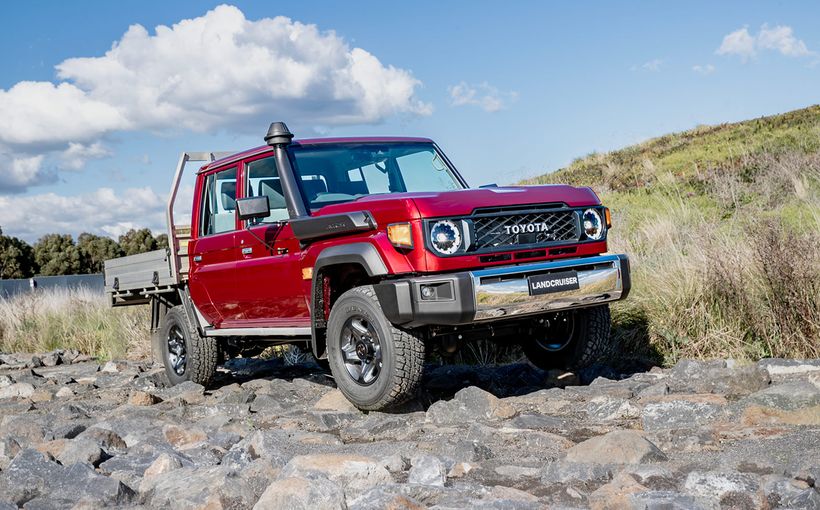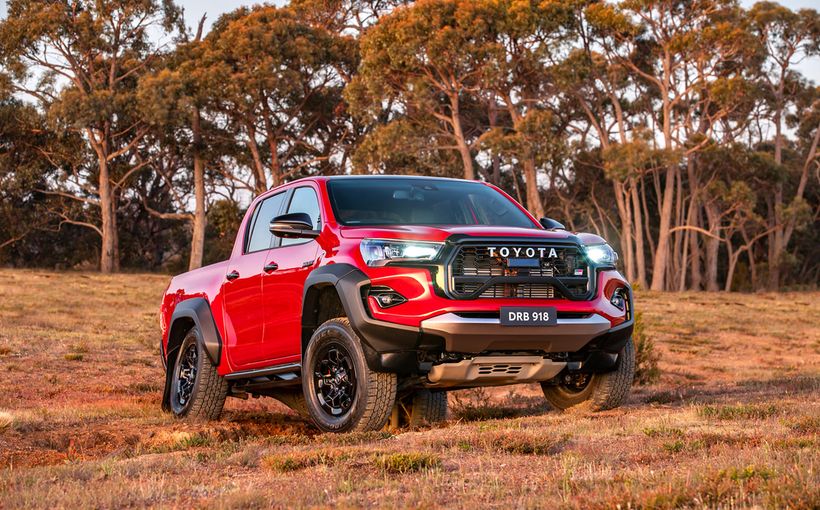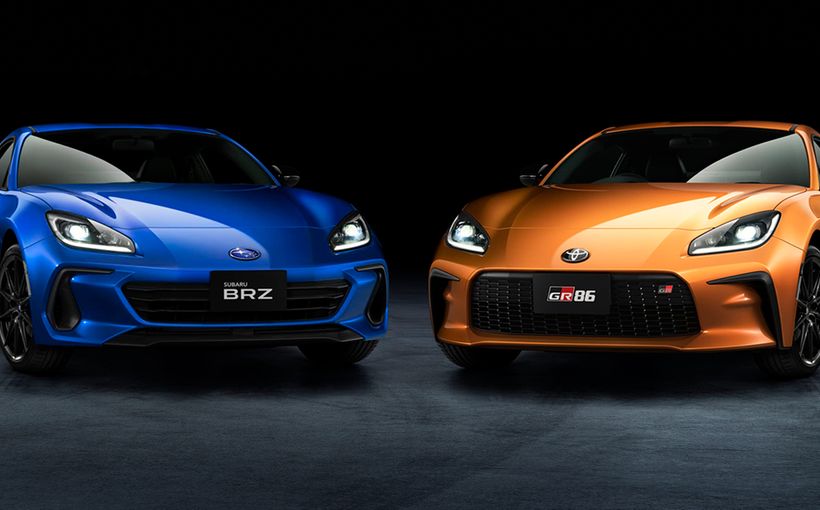Toyota Supra: Japanese Corvette, but better (after 1986!)

One of the most interesting aspects of the Japanese automotive industry's meteoric rise from domestic supplier to major international player in the 1965 to 1975 time frame is that, mostly, Toyota did not create what we might call enthusiast cars.
So it was that most industry observers were unprepared for the Toyota Supra of 1985. To understand the surprise provoked by this Europe-challenging grand tourer, it is necessary briefly to recap Japanese sports car history.
The merger between Nissan and Prince in 1966 led to a long line - continuing still - of high performance models with few (sometimes no) Japanese rivals. Think of the Fairlady/2000 and the 240Z as the prime examples.
Toyota had made one brave and unforgettable foray into the realm of exclusive sports cars with its gorgeous 2000 GT, star of the 1965 Tokyo motor show. But behind this machine lay Nissan history.
Under the supervision of design consultant, Albrecht Goertz, who offered his services to Nissan and was engaged by the company in May 1963 on a two-year contract. Goertz, who was of aristocratic German extraction and was entitled to style himself ‘Count’ had emigrated to the US just before World War Two. He worked with Raymond Loewy on the beautiful 1953 Studebaker before designing the supremely beautiful BMW 507, the pure sports car that gestured towards the future BMW management of the mid-1950s could not have foreseen. Goertz then spent a year at Porsche helping develop the 911.
During his two years at Nissan, he visited Japan for a fortnight every three months. He worked on the pretty little Silvia (the initial design of which had been created by Kazuo Kimura) and then on a project for a pure two-seater sports car and related 2+2 GT, known as A550X.
Before A550X was completed, Goertz went to Toyota. The 2000 GT drove into the limelight soon afterwards. What would the Datsun A550X - by that or any more charismatic name - have looked like? Astonishingly like the 2000 GT.
Just 351 of these lithe and lessons beauties were made and from 1965 to the end of the 1970s about the sportiest Toyota produced was the Corona 1600 GT of 1967 which used engine technology from the 2000 GT. Just 2200 were made.
Next came the Celica (1970) which promised a new sportiness but its 1977 and 1981 successors favoured city slickers rather than enthusiast drivers, attracting the unkind and these days politically incorrect epithet of ‘Hairdresser's Sports Car’.

Toyota’s product planners, however, spotted a gap in the traffic. Why not stretch the Celica's body ahead of the front doors and insert an in-line six-cylinder engine? Fortunately the first incarnation, produced in 1979 and sold in Japan as the Celica XX and overseas from 1980 (though not in Australia) as the Celica Supra.
Even when the second version of the Celica sixpack was introduced, the ‘Celica’ prefix remained, and so the local market got its first Celica Supras in 1982. This was the A60 model, and what a weird piece of work it was (though surely better looking than the somewhat lumpy XX?), and one that must appeal to collectors all these years later.
The A60 Supra looked like nothing more than a hot-rodded Celica with its Torana A9X-like fender flares, wide wheels and ostentatious black roof-mounted spoiler above the rear window. But despite the extra two cylinders, it proved a disappointment on the road.
The 2.8-litre engine's peak torque and power figures immediately reveal that it was not sports car material. While the outright numbers were at least adequate by 1982 standards, just check out the engine rpm. Peak torque was 226 Nm, while maximum power was 103 kW, but the former was on hand at 3600 rpm and the latter at a staggeringly low 4800, making the tachometer's 5800 redline entirely farcical.

The Celica Supra could Sprint to 100 km/h in a lively enough 8.9 seconds but its day of reckoning soon came. Its standing 400 metre time of 17.2 seconds made it significantly slower than rivals such as the Alfa Romeo GTV6 (16.4), Mitsubishi Starion (16.2) and Nissan 300 ZX (16.8) and its top speed fell short of the 200 km/h expected in this class at the time.

But its performance was less yawn-inducing than its dynamics. Those beefy 225/60 tyres gave good adhesion on smooth roads, but the car was nose-heavy and delivered no real feel through its too-light power steering. It was absolutely no rival to the best sports cars in its class, the Starion and Mazda RX-7.
Then there was the appallingly 1980s dashboard with more than a passing similarity to a jukebox. Digital gauges were just beginning their brief fashion fad. While the seats were comfortable, there was nothing about this interior to suggest that its designers had ever even sat in a real sports car.

We didn't have to wait long for what seemed to be a whole new vision from Toyota. This started in 1985 with a car neither I nor any of my motoring journalist colleagues were even slightly prepared for: the first front-wheel drive Celica. Even as early as 1985 before front-wheel drive was anything like universal in small and medium sedans, let alone sports cars, the cognoscenti were insisting that rear-drive was the way of champions. And so, at the media launch of the fourth generation Celica, we could barely believe what the seats of our pants were telling us. Here was a true Toyota sports car with delicious handing and brilliant performance from – amazingly! – a twin overhead camshaft 16-valve four-cylinder engine which joyously revved past seven grand.

And what does the foregoing rave have to do with the first Supra to drop the Celica prefix? Simple. Both the 1985 Celica and Supra were the work of one chief designer, Akihito Wada. Additionally, Toyota had even created a mid-engined sports car, the MR2 but that one would not be sold here until 1987.
The first Supra to be sold in Australia really was a six-cylinder Supra. Wada was allowed to create not only a new Celica but a new and entirely stand-alone Supra. Toyota logic gave the former front-wheel drive and the latter rear-wheel drive.
The A70 Supra, which arrived in Australia in 1986, was as revelatory as that front-drive Celica. Here was Toyota's answer to the 240Z, if you like, a decade and a half down the bitumen.

Most criticism of the Supra focused on the coupe's considerable mass. It weighed 1510 kg, compared with 1210 for the Alfa GTV6 and 1271 for the second generation (and much heavier) RX-7, according to Wheels magazine's published figures. The fact that it's superlative new 3.0-litre twin overhead camshaft 24-valve V6 engine made more than enough power and torque to overcome this weight burden seemed somewhat beside the point. Why, testers including me wondered, did it have to be so heavy: wasn't minimal weight a key element in a sports car?
Perhaps Wado was not much concerned with the Supra’s size and weight because he had his new Celica to pitch against the RX-7, Starion and Alfa GTV6.
Looking back, it's easy to see that the first purebred Toyota Supra was actually ushering in a new world of grand touring coupes, where phenomenal engines took care of growing mass. Consider the BMW 850i of 1989, it weighed 1800 kg! These cars were largely conceived to meet American tastes, just as the Datsun 240Z had been. Toyota and BMW were two companies who had enjoyed great success in the US market and although neither the Celica XX and its Supra successors nor the 850i were direct Corvette competitors, it’s easy to see similarities.

The marvellous thing about the Supra was that once you got it beyond the 60 and 80 km/h zones, its size seemed to shrink around you in that way it is said a good big car’s does. No matter how hard the driver pushed, the car refused to understeer, feeling superbly balanced front to rear.

As for that engine, in 1986 maximum power of 140 kW (at 5800 rpm, interestingly its predecessor's misleading redline) was really something. The heavyweight BMW 735i ($63,500 to the Supra’s $34,600) made 150, the newly launched Mercedes W124 300E ($65,739) offered 135 and Jaguar’s XJ6 – much heavier than the Supra – looked almost underpowered with 129.
Zero to 100 km/h wasted just 8.6 seconds while the 400 metres was the work of 16 flat. Top speed was 212. These were all good figures but the Supra’s wonderful engine and dynamics seemed to promise more.

The new Supra’s interior was as appealing as the old model's had been unsatisfying. Proper round gauges with white numerals and needles on a black background.
Sales were strong from the start. In time for spring and just a few months after the introduction of the new Supra, Toyota Australia also began to import the Sports Roof model. If Porsche hadn’t owned the rights to the name Targa, that’s probably what this variant would have been called. The removable centre section of the roof was locked to the windscreen roll bar frames by four quick-release screws and could be stowed in the roof and secured by brackets. At $40,850 for the manual and $43,030 for the automatic it commanded a premium of $3250.

Finally, Toyota Australia brought the premium turbocharged Supra here in time for the 1990s. It replaced the Sports Roof variant and cost $59,900, by which time the standard Supra had escalated $20,300 from its launch price to $54,900.
The Supra Turbo delivered the level of performance that probably should have been available from the start (and in fact this version was available in other markets from 1987) with 173 kW of power. To give this figure some more context, the biggest news for Toyota Australia in 1990 was the arrival of the Lexus LS400 flagship. The state of the art quad camshaft 32-valve 4.0-litre V8 made 186 kW. The only other cars available in Australia in 1990 that had more power than the Supra Turbo were the BMW 750iL (220), the V12 Jaguars and Daimlers (195), the Lamborghini Countach S (276), the Mercedes-Benz 500SL (240), the Porsche 911 (184) and the 928S4 (235).

From 1982 when the Celica Supra was introduced to 1990, the local motoring scene changed greatly. Consider that the earlier Supra made 103 kW and the 1990 Corolla SX delivered 100! But nowhere was the march of progress more evident than in comparing that early model with the 1990 Supra Turbo.
For some years there has been a surge of interest in classic Japanese cars and both the A60 Celica Supra and its A70 Supra successor will doubtless eventually be cherished in much the way the early Datsun Z-cars are.










